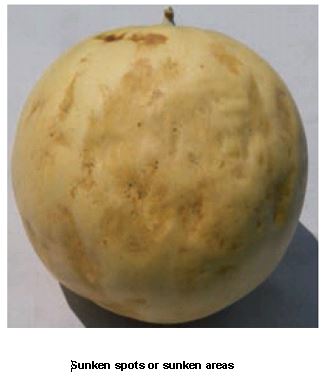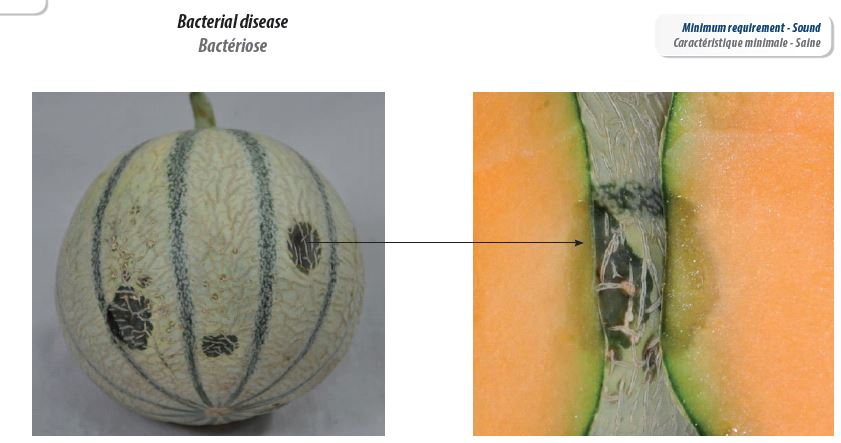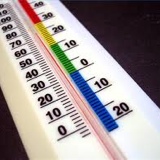Title Page
-
Site conducted
-
Document No.
-
Audit Title
-
Prepared by
-
Location
General Appearance
General Appearance
-
Product Description
-
Supplier
-
Date :
-
Inspection Type
-
AWB/ Container Number:
-
Shipment Number:
-
Any delay in product arrival?
Consignment Evaluation:
-
Claim?
-
Suitable for Supermarkets?
-
Summary:
-
Type of Melon?
-
Stage l=Mature, Unripe External colour white with greenish aspect; rind/skin slightly fuzzy/hair, no aroma; melon splits when cut, pulp is crisp; minimum commercial harvest maturity.
Stage 2=Mature, Ripening External colour white with trace of green; rind/skin not fuzzy, slightly waxy, slight to noticeable aroma; melon splits when cut, flesh crisp; harvest for long-distance markets.
Stage 3=Ripe External colour creamy white to pale yellow, rind/skin waxy; noticeable aroma; stem may begin to separate from fruit; flesh firm, when sliced does not split; ideal eating, harvest for local markets
Stage 4=Overripe External colour yellow, soft at blossom end; very aromatic; fruit is separated from stem; Seed cavity has signs of breakdown; flesh soft, somewhat water soaked in appearance/
Photo Credit: Marita Cantwell, UC Davis -
Internal Colour
Photo Credit: Marita Cantwell, UC Davis
General Appearance:
-
Packaging in Acceptable Condition: Product is the correct weight? Any damage to packaging?
-
Visual Appearance:<br>- Colour <br>- Shape<br>- Size<br>
-
Sensory Evaluation:<br>- Eating Quality/ Taste<br>- Maturity <br>- Brix<br>- Internal Colour<br>- Seed Cavity appears fresh- No breakdown (over-mature)<br>- Firmness - Blossom end is firm with no soft spots ? ( Stage 4 melons may have softness around blossom area)
Defects
-
Minor Defects:<br>- Light Blemishes<br>- Pressure Damage<br>- Healed Scaring<br>
-
Major Defects:<br>- Heavy Blemishes<br>- Pest Damage<br>- Cuts/ Splits<br>- Pitting<br>- Heavy Bruising/ Pressure Damage
-
Common Defects
-
Chilling Injury with Pitting to the rind/skin.
-
Rind/skin Defects.
-
Sunken Areas to the rind/skin - May be due to rough handling.
-
Chilling Injury to the flesh
-
Signs of aged melons
-
Area
-
Defects
-
Temperature Injury:<br>- Pitting<br>- Blemishes/ Sunken Areas on Skin <br>- Chilling Injury<br>- Water Soaked Flesh
-
-
CRITICAL: <br>-Breakdown/ Rots Found <br>-Biosecurity requirements<br>-Fail FSANZ Food Safety requirements<br>-Foreign matter or plant material present
-
Internal flesh
Photo Credit: Marita Cantwell, UC Davis
General Appearance:
-
Packaging in Acceptable Condition: Product is the correct weight? Any damage to packaging?
-
Visual Appearance:<br>- Colour <br>- Shape<br>- Size<br>- Stem Slip Stage<br>- Stem area firm
-
Sensory Evaluation:<br>- Eating Quality/ Taste<br>- Maturity <br>- Firmness<br>- Brix<br>- Internal Colour<br>- Internal discoloration affecting the flesh, near the rind of the melon?
Defects
-
Minor Defects:<br>- Light Blemishes<br>- Pressure Damage<br>- Healed Scaring<br>
-
Major Defects:<br>- Heavy Blemishes<br>- Pest Damage<br>- Cuts/ Splits<br>- Pitting<br>- Heavy Bruising/ Pressure Damage
-
Hollow Heart
-
Insect Damage
-
Watermelon Blotch
-
CRITICAL: <br>-Breakdown/ Rots Found <br>-Biosecurity requirements<br>-Fail FSANZ Food Safety requirements<br>-Foreign matter or plant material present
-
- Fruit begins to separate from stem
Photo Credit: Marita Cantwell, UC Davis
General Appearance
-
Packaging in Acceptable Condition: Product is the correct weight? Any damage to packaging?
-
Visual Appearance:<br>- External color between netting<br>- Shape<br>- Size<br>- Stem Slip Stage - Are the Stems are attached to melons ? - Stems have detached from melons (mature fruit)<br>
-
Sensory Evaluation:<br>- Eating Quality/ Taste<br>- Maturity <br>- Firmness - Blossom end is firm with no soft spots?<br>- Brix<br>- Internal Colour<br>- Seed Cavity appears fresh? No breakdown (over-mature)<br>
Defects
-
Minor Defects:<br>- Light Blemishes<br>- Pressure Damage<br>- Healed Scaring<br>
-
Major Defects:<br>- Heavy Blemishes<br>- Pest Damage<br>- Cuts/ Splits<br>- Pitting<br>- Heavy Bruising/ Pressure Damage
-
Sign of aged melons
-
Area
-
Bacteria Disease
-
Signs of overripe melons
-
Defects
-
Temperature Injury:<br>- Pitting<br>- Blemishes/ Sunken Areas on Skin <br>- Chilling Injury<br>- Water Soaked Flesh
-
CRITICAL: <br>-Breakdown/ Rots Found <br>-Biosecurity requirements<br>-Fail FSANZ Food Safety requirements<br>-Foreign matter or plant material present
-
Piel de Sapo melon - Firm, yellowing olive-coloured melon with ample ‘netting’ or ‘cracking’ lines on the skin.
This indicates that the melon has been harvested at its peak so its pale green-coloured flesh is sweet and ready to eat.
Look for a yellow spot at the stem and a yellow resting base. The melon will be non-aromatic.
Best stored at a consistent 7-8 degrees.
The melon doesn't like going in and out of refrigeration as the skin can condensate, resulting in black spots.
General Appearance
-
Packaging in Acceptable Condition: Product is the correct weight? Any damage to packaging?
-
Visual Appearance:<br>- External color between netting<br>- Shape<br>- Size<br>- Stem Slip Stage<br>
-
Sensory Evaluation:<br>- Eating Quality/ Taste<br>- Maturity <br>- Firmness<br>- Brix<br>- Internal Colour<br>- Seed Cavity appears fresh? No breakdown (over-mature)<br>
Defects
-
Minor Defects:<br>- Light Blemishes<br>- Pressure Damage<br>- Healed Scaring<br>
-
Major Defects:<br>- Heavy Blemishes<br>- Pest Damage<br>- Cuts/ Splits<br>- Pitting<br>- Heavy Bruising/ Pressure Damage
-
CRITICAL: <br>-Breakdown/ Rots Found <br>-Biosecurity requirements<br>-Fail FSANZ Food Safety requirements<br>-Foreign matter or plant material present




































